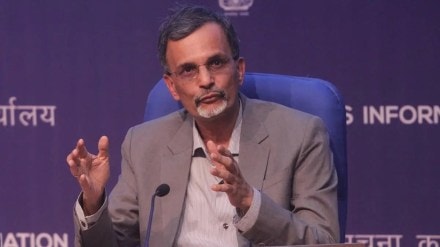Chief economic adviser V Anantha Nageswaran on Friday said India could grow 6.5-7% annually through 2030 sans any additional reforms or the risk of overheating. With more reforms, growth could accelerate to 7.5%-8%, he said.
With a stronger-than-expected rate of expansion of 6.1% in Q4, the FY23 GDP growth came in at 7.2%, compared with the advance estimate of 7%.
Speaking at an event organised by industry body CII, the CEA said the growth in FY23 could prove to be even higher than 7.2% when the final number is released by January-February 2026.
“There is a momentum in the economy. Even 7.2% will turn out to be an underestimate and not an overestimate of growth last year,” he said. “Domestic industry, services, GST collections, bank credit growth, all of these are pointing towards good growth momentum in 2023-24 as well,” Nageswaran added.
The finance ministry has recently upgraded its assessment of economic growth for FY24 to “6.5% with risks evenly balanced” from a ‘high downside risk’ to the forecast maintained in the Economic Survey.
“Between now and 2030, based on what we have done so far without assuming further reforms will be done, I can say we have the potential to grow steadily between 6.5% to 7%. If we do additional reforms (including land and power), growth can go up to 7-7.5% or even 8%,” he said addressing the CII event in Lucknow.
He said the Indian economy can now sustain high growth for 10-15 years without overheating like in the past. “Whenever the Indian economy grew very strongly for three to four years it used to run into problems, inflation will pick up, imports will go up, the currency will become very expensive and then we have to take some drastic action,” Nageswaran said. “But this time, because of the sound economic policies we have followed, the infrastructure we have built in the last eight years and the digital transformation of the economy, India can grow for a longer period without running into overheating problems,” he said.
The CEA said average inflation is manageable at around 5% in FY24 compared with 6.7% in FY23, as risks from crude oil and food items have come down. He said that even if the monsoon was slightly delayed, water reservoir storage on an India basis is 24% higher than the last 10-year average in terms of water availability. Seed availability is pretty good for kharif. “Food grain procurement was very strong in 2022-23, so, there is enough inventory to control price,” he added. The monsoon has been delayed by a week.
On June 8, the Monetary Policy Committee (MPC) of the RBI maintained a status quo on the repo rate keeping it unchanged at 6.5% in its second bi-monthly policy meeting of the current fiscal. The RBI revised its FY24 inflation projection slightly lower to 5.1% from its earlier forecast of 5.2%, but flagged that developments related to the monsoon needs to be monitored.
